#which can be basically converted as 1$ store to 3$store
Explore tagged Tumblr posts
Text
↠The last drop tour
| Part 1 | | Part 2 | | Part 3 |
Alright, alright, I know I’ve already shown you the Last Drop, so here we’re looking at the one from the alternate timeline, as seen in Episode 7. The elements and layout don’t change too much, but there are variations, and since my story is set in this universe, I imagine this version is the most helpful for anyone wanting to explore the universe I write about. The link to the story is HERE, but I hope this can also be useful for anyone writing or reading their own work.

Here we are once again! This tour might be a bit challenging, but don’t worry—your guide has got you covered! This time, we need to start outside.
I know we all recognize the exterior of the bar, which hasn’t changed, but I ask you to take a closer look at the streets. They’re clean and bathed in sunlight. (The Last Drop is in the Entresol, the middle level of Zaun’s three depth levels.) While it may seem almost normal or expected, the smog that used to accumulate made it impossible for light to filter through the thick air, even during the day. As a result, the underground city never got to see this much light. This is the first time.
In Heimerdinger’s sequence where he’s seen playing "Spin the Wheel," we can catch glimpses of glass greenhouses protecting plants, and people in wheelchairs, hinting that the city is now more accessible.


This is the third post where I’ve mentioned this damn ceiling, so I went back just to show it to you, because it was necessary at this point. Let’s start with the fact that the Last Drop has been renovated. The fact that Ekko is wearing a gold earring and is so well-dressed suggests that their profits have increased, and the first thing they did was fix up the place. But enough talk—let’s get to the proof. Now that natural light reaches Zaun, the LED lights on the ceiling aren’t needed anymore. What is needed? Glass, to let the light in.


And so, we move on to another small but significant difference. Scattered throughout the Last Drop, but especially at the bar counter, there are terrariums with plants. Claggor and Mylo are even working on plants capable of converting the dense air of the Sump into clean oxygen. But why do plants have such prominence here? In Season 1, we’re shown that in Zaun, only one place had plants: the Chembarons' meeting room. It was so high up and so clean, thanks to the ventilation on the ceiling, that plants were a privilege of the oligarchy, not something for everyone. But here, even ordinary people in Zaun have plants around, and they thrive.
The bar counter remains the same, the barrels behind Vander are still protected by the same glass partitions as always. The difference now is that everything is adorned with what used to be a symbol of luxury.


Did you recognize these booths? Now, instead of the Chembarons' photos, there are sheets with dart game scores written on them—both for the kids and the three older men. To be honest, the one I’m showing you in the photo from Zaun’s original timeline is actually the first booth on the left from the entrance. Meanwhile, the one shown where the kids are sitting is the second booth, a bit closer to both the bar counter and the narrow hallway that leads to the arcade area and the pool table.


Which ones? These. Actually... this photo was taken in front of the first booth, and we can see Powder's drawings hanging there. Basically, we understand that they’re portraits of all of them together, happy. Maybe some are solo portraits, but they’re definitely very different from how things are now. (the comparison)


I imagine that the basement where Vander and his children used to live is now the place where they store alcohol and reserve drinks, or maybe it has become a boiler room. We don’t have photos of the lower area (which, I remind you, can be accessed by taking the door to the right of the bar counter and going down a long staircase) nor of the upper area, which is reached by climbing the stairs to the left. So, I can’t show you more parts of our beloved bar, but I can tell you that according to what we’re told in episode 7, they now offer both live music and events. So, the Last Drop has continued both Vander’s family-oriented, rustic management and Silco’s vision of a nightlife hub and heart of the city.

As for the rest—how we got to this point, what brought the change, how Silco's eye healed, how they managed to reach such an economic development to renovate the bar in that way—I can only speculate. But, I won’t do that here.
The theme of the universe’s development from episode 7, starting with Vi’s death, is what I talk about in my fanfiction. So, I’ll take a moment to advertise myself during this tour and let you know that if, in addition to the objective facts, you'd like to hear my opinion, I address it HERE (Everytime it rains).
From these three tours, I think you've gathered that I’m someone who pays a lot of attention to details, which is why a superficial analysis of the differences wasn't enough for me. I needed a bigger space to narrate (and analyze) the politics and the domino effect of events. So, I don't know, I hope to see you again at the bar.
Sincerely, your guide, provided by...
-Kiramman's chronocare
#zaundads#arcane writing#arcane#arcane background#the last drop#last drop#arcane silco#silco arcane#zaun dads#vanco#young silco#young vander#vander arcane#arcane vander#vander and vi#silco and jinx#arcane analysis#silco x reader#silco x you#tagged because of the ff#arcane alternate timeline#last drop arcane
181 notes
·
View notes
Text
High waisted trousers for Masc frame - Teen version + Adult renewal

High waisted trousers for male sims, doesn't sound too complicated, does it? Well, it actually kinda is. See bottom of the post. But first, let's get the basic info you're here for out of the way...
Pants are snatched from this store outfit and then altered a bit.
So without further ado:
Teen Version
Higher waisted and lower waisted version
2 Presets each, with ombre and plain mask.
Found under Everyday, formal, career & outerwear
All lods, low poly: 988 F 658 V / +- 500 F 350 V / +-250 F 200 V
Fat, fit, thin Morphs
1K textures
Download simblr.cc / SFS / Mediafire
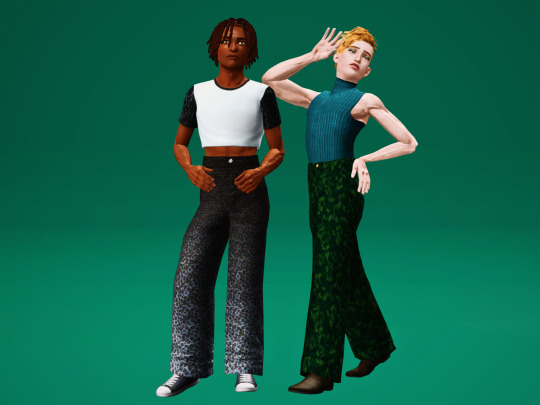

High waisted

Slightly-lower-high-waisted

Custom Thumbnails

Adult Version
Will override the files from my original post (Simblr.cc / Tumblr)
Higher waisted and lower waisted version
2 Presets each, with ombre (3 channels) and plain mask (2 channels).
Found under Everyday, formal, career & outerwear, enabled for maternity.
All lods, low poly: 988 F 658 V / +- 500 F 350 V / +-250 F 200 V
Fat, fit, thin, preg Morphs.
Redone weights.
Cleaned up morphs.
Made the booty nicer.
Changed the bonedeltas for the pregnant morph with bonedelta editor, so there will be no/less clipping with the belly in animations.
1K textures
Download simblr.cc / SFS / Mediafire
High waisted

Slightly-lower-high-waisted

Booty & preg morphs

The original presets & custom thumbnails

"What do I use these with?"
They will work with:
Very cropped tops.
Tops whose waist is texture only/painted on. You might need to change their overlay priority to 5 in S3PE (ask me for details how if necessary), or alternatively, actual naked torso with a texture-only accessory top. Texture-only Accessory tops will be, or should be, usually be enabled for teen-elder.
Slightly lower waisted version will work with most tops that are called "cropped" minus some very minor clipping
Both will generally work with very wide/bulky tops, that aren't too long (the nice booty might clip otherwise)
Items it is combined with in the pictures:
Cropped Hoodie for teenagers is on the way, adult version here
Cropped Tee for teenagers is on the way, adult version here (Version 1, most cropped)
The Female to male Supernatural bustier jacket is on the way for teen & adult.
The sleeveless Turtleneck for teens is by Aya here, however it had some issues in the materials (Very, very, very shiny in dark colors) so I made a fix which is here
Lace Turtleneck is converted-by-me Eros by Joliebean Here. Meshed version is adults only right now, Accessory version (dark green in morph pics) is Teen-elder.
Edit: i just discovered they will clip when heavily using bodysliders. Unless i can get said sliders in blender as functional sliders, there is not much i can do that will also keep me sane.
!!!The creation ramble!!!
(The below figure is in profile view and bending their knees and waist)

Clarification: I mean the transferred-over bones from the original TS4 creator might be imperfect to begin with, so even if it is a conversion, just using those might not be the end of the story.
Basically, making pants like this that by definition will overlap with whatever top, is a delicate balance between aesthetic (close to the body) and no clipping (requires great bones or further from the body). The female frame seam between top and bottom mesh sits higher, making high waisted stuff for them easy, this is obviously done as high-waisted stuff is popular amongst women and EA knew. Femme male sims they didn't really consider.
I also tried a version where they were texture-only above the traditional seam, but unless I gave the pants absolutely no normal map, there was still a visible seamline. I also didn't like how painted on/jegging-like the details looked.
After learning you can import rigs in blender with geom tools to connect to your geom, and literally see the shape change as you change the weights, I started abusing that possibility.
Due to weights transferring improperly due to the inner tights intersecting, meaning I had to repaint the whole crotch when I did between the slightly differently meshed versions, I also had to repaint the thighs & waist of all 4 versions. But, five days with several 8-hour sessions repainting until 2 am later, I am here:

Note that I didn't check like 15 different extreme animations and there might still be some clipping with certain very active animations, particularly in extreme morphs. But as you can tell I am a huge perfectionist and I am happy
Credits & tools used
GIANT thanks to @virtual-hugs for pointing out to me you can import a rig, and doing some end-stage testing & figuring out the why of something happening after I had given up hope on fixing that, and generally keeping me sane.
@elvgreen for some additional encouragement/rambles between us perfectionists as I worked on this ashhole.
The creators of Blender, S3PE, Cmar (RIP) for Meshtoolkit, and to a degree TSRW even though I only used you for the presets as you Kept. Ruining. The. Bones. (the last two days I always just replaced the bones & morphs with s3pe and meshtoolkit straight to the packagefile)
@wanderingsimsfinds @katsujiiccfinds @pis3update @eternalccfinds and whoever, you'll find it.
#florian pistache#andres bardem#sims 3#ts3cc#downloads: me#downloads: cas#downloads: clothing#ts3#sims 3 cc#s3cc#clothing AM#clothing TM
105 notes
·
View notes
Text
lets talk about game files what a new an interesting concept
splatoon textures, along with all bfres textures, are stored using S3 compression, or "BCn" it's a series of formats from BC1 to BC7
this is only used in nintendo's ".bntx" format, and of course the industry standard for DirectX textures, ".dds"
(bntx can describe multiple images at once, like all the textures for an entire scene can be one bntx file, while dds only allows one image per file)
It's a bit similar to JPEG where things are stored in little chunks, jpeg is 8x8 and bcn is 4x4. JPEG uses combinations of cosine functions and fourier transforms to represent each block while bcn is fucking wizardry idk but it changes on each version.
Coloured textures in splatoon 3 use "BC1" It's a format which allows 3 colour channels and a single bit alpha channel. It kinda sucks, a normal image has 3 channels each with 8 bits of colour, but bc1 uses 5 bits red, 6 bits green, 5 bits blue. And somehow the alpha is stored in there through wizardry. It's 16 bits per pixel rather than 32 and compresses really well and u can barely notice it so whatever yay
Single colour textures, like roughness, alpha, metalness, anything black and white which represents data rather than colour is "BC4". It only supports one channel so it can be a pretty small file for the data it contains. 8 bits per pixel but again, only one channel, no alpha at all, but you wouldn't need it
That accounts for maybe 80% of the textures in game, and 19% goes to "BC5" which is nearly exclusively used on Normal Maps. Instead of a colour or some data, it represents a direction using 2 channels. It's really cool because, if you have an X and a Y channel, for a direction, you can calculate the Z channel with no loss of information!!
This is why some normal maps are yellow instead of blue!
Nerd Shit: the blue channel is just sqrt(1 - x^2 - y^2), so if you have a yellow normal map, you can use math nodes in blender to convert it to a 3 channel one. That equation is actually a rearranged version of the Pythagorean Theorem!
another interesting thing is that BC5 textures sometimes calculated in a weird format, "SNORM" (signed normalized) which allows for negative numbers! For a byte, it maps [0, 255] to [-1, 1]
Nerd shit: it's actually [0, 127] to [0, 1] and 128 turns to -1, and [129, 255] to [-1, 0), note the last one does not include 0, a value of 0xFF is just slightly less than 0. By having two negative ones, the interval of [-1, 1] is represented with evenly spaced values unlike a float, which gets more precise as it goes to 0
the final 1% is BC6 and unlike where the value of a pixel is gotten from signed or unsigned bits, it's stored as floats! floats can store basically any number but you lose precision at really large numbers, but hell even at low numbers. Splatoon 3 uses BC6 for the skyboxes! by having the numbers as floats, you can parts to be extremely different. The largest difference in a normal image is a pixel with brightness 1 to a pixel with brightness 255, which is 255x more. A float technically can be infinitely times more, but it allows you to also have a lot of detail in the dark parts, while having detail in the lighter parts too! if you're making a realistic scene, it would make sense that the sun would have to be more than 255x brighter than the rest of the sky. even if your monitor cant display things that bright, it allows for much more realistic lighting
switch toolbox doesnt allow you to export to an easily usable format which supports floats, i can export it as a dds but not many programs can use that, and even less use ASTC. I want to get it to export to EXR but thats gonna take a bit.
thats my explanation on why i haven't ripped skyboxes that was the whole point of this post. bye
33 notes
·
View notes
Text
Chinese Measurement Units Guide
At first glance the Chinese clothes sizes make little sense (they still make not that much sense even at the 15th glance as well to be honest). And the fruit and veggie prices are also no odder.
Then I realized that China has its own local measurement units, so here are some unique measurement units you should look out for plus an odd one out.
1. Weight
Kilograms are used (confirmed this during my medical exam, which is a story in itself), but for things like fruits, veggies etc. 公斤 is used, which is basically kilos divided by 2.
一斤 (yī jīn���= 500g
两斤 (liǎng jīn)= 1kg*
*Even though 斤 is translated to as pounds sometimes, it's actually kilos.
This is also used for clothing sizes (on taobao at least), so if you want to get an accurateish estimate you need to convert your weight to kilos, multiple by 2 and then select a size that fits within the range.
For example: if you weight 70 kg, you then multiple that by 2 = 140斤. Clothes will usually have size ranges e.g. 120-145斤, so that could fit into the L (Large) category.
Note: Sizes vary across stores, so an L in one shop can be an XL in another store or an 2XL in a different store so be ready to contact the seller asking for more specific measurements if not too sure.
2. Length
Usually kilometres and metres are used, but there's also a local system.
0.5 km - 1里 - lǐ
1 km - 2里 - lǐ
3. Area
Same as the previous one, the western measurement units are used but there's also a local system. Not very common from what I've heard, but still pretty handy and interesting to know.
1 km² -15顷 - qǐng
4. Volume
Volume is the same as the metric system, with it's own name so no surprises here.
1 L - 1 升 - shēng
The only major issue I've had has been with the weight measurement and its conversion, but other than that there aren't many issues.
5. Contact lenses
Maybe it's a location thing, but the eye diopter thing here is slightly different.
If your prescription is -4.00, then here it'll be just -400 or just 400 without the minus if buying on Taoboa. It should be obvious (farsightedness of +4.00?? with people studying and working that much??), but it threw me off the first time I had to get my contacts here.
They range from 0 to -8.00 but with one value for the entire package, so if you have significantly different diopters in each eye e.g. -2.00 in your right and -3.00 in your left, then you may have to buy 2 packets, 1 for each eye.
#chinese studyblr#mandarin langblr#chinese langblr#chinese language#learn chinese#chinese#college#college life#student life#aesthetic#student#studyblr#study blog#study motivation#china#study in china#travel blog#slavic roots western mind#measurement
67 notes
·
View notes
Text
BONUS SCENE: SUSPICION (part 4)

WAVES OF MISFORTUNE
CHARACTERS:
🌊 Hugo “Cricket” Tinoco (pov) 🌊 Benji Aikawa 🌊 Zhihao (the Familiar)
TIMELINES:
approx. 809 AA (global timeline)
word count: 1.5k part 1 / part 2 / part 3 / part 4

Benji: [steps forward to awkwardly-yet-gently place his hand on Cricket's shoulder]
Cricket: [tenses, but—]
Benji: (voice surprisingly gentle) "listen. If you really don't have any ulterior motives, you have nothing to worry about. You did good today. And she might not have told Manar, so."
Cricket:
Cricket: [uncertain and still feeling ill, but hesitantly opened his eyes and drew his forehead from his staff to dizzily look at Benji]
Benji: [offers a clearly-forced, awkward smile]
Benji: (awkwardness leaking into his voice, though he keeps it gentle) "come back up with me. Zarina's got something for you."
Cricket: (dizzily) how would he—[and remembers his telepathic connection with Zhihao]—oh. Right. 😅😭
Cricket: [gives an awkward, clumsy nod and takes a deep breath, trying to recollect himself]
Cricket: okay… I can give myself a break. This is an okay time to take some essence…
Cricket: [closes his eyes and gently sets his head against the top—the partially-encased conduit—of his staff. As he lets out his breath in an equally-slow sigh, draws back a bit of the essence he'd stored within the conduit]
Wizards: [would often store extra essence within conduits—or, essence banks—whenever they weren't otherwise going to use magic. Then, they'd be able to save that magic energy in order to cast more, far greater spells another day]
Wizards: [due to the fact that basically all of them kept conduits on themselves 24/7 through their wands and staves, were able to build up massive wells of essence after months to years of storing their energy within it]
Essence: [except… despite being 'energy', it was only magic energy. It wasn't convertible into physical energy, which allowed an individual to exist and act as a physical entity. It only helped them effect and alter the world around them through means outside of their physical forms]
Conduits: [as they contained the essence of individuals, though, it had the same traits—and inclinations toward certain types of magics—as whoever it came from]
Cricket: [personally, was best with earth, nature, protective, and corrective magic. And so, anyone who tried using his conduit to cast magic would have the same strengths in those concepts, and weaknesses in the opposites]
Cricket: [every night, would shove as much essence as feasible into his conduit for later use, then let his essence pool regenerate overnight as he slept. Then, refused to touch the essence within his conduit except for absolute emergencies or combat, where the threat of overextension was much too dangerous to use his natural pool]
Cricket: [except, now he's drained, rattled, and nauseous enough from his accidental overextension to allow himself to borrow a bit from his conduit…]
Cricket: [just in case]
Cricket: [the pain in his chest, weight on his shoulders dragging him down, and nausea slowly fade as he taps into his conduit]
Cricket: (tiredly, to himself) okay… that's enough.
Cricket: [and, finally, cancels the magic. Breathing more easily, hesitantly opens his eyes and lifts his head from his staff to look up at Benji]
Benji: [face mostly unreadable as he eyes Cricket, but has an eyebrow and corner of his lip quirked slightly. Thoughtfully or critically?]
Benji: (dryly) "you need help heading up?"
Cricket:
Cricket: [cheeks flushing, takes another deep breath as he looks away awkwardly]
Cricket: (voice awkward and tired) "… no. I'm fine."
Cricket: what's with this sudden change? How does he—?
Benji: [gives a slight hum, then turns and waves Cricket along]
Benji: (a faint bit of amusement in his voice) "alright, then. Come on. You're not supposed to be down here."
Cricket:
Cricket: 😅
Cricket: [—and lets out his deep breath in a heavy sigh, nodding and turning to follow Benji's directions]
Cricket: [and leaning against his staff as a sort of walking stick to help him stay steady] :'D
Benji: [as he leads Cricket, absentmindedly and dismissively) "of course, it's fine since Zhihao and I lead you down here, but you know. For future reference, it's off-limits down here. Important cargo stuff and all."
Cricket: [only half listening to him; busy remembering—]
Benji: (voice harsh) "Zarina may like you, but Zhihao and I are keeping an eye on you. If you slip up at all, we will report it to the Captain." Benji: [gives a dark smile that quickly grows into another smirk; voice amused and ominous) "and, after today, I'm sure you know… you do not want to cross our Captain." >;'D
Zarina: [had fought absolutely brutally against the pirates, proving and showcasing just why she managed to graduate from Lotus Academy of Knightage and Magic]
Benji: (strictly and authoritatively) "here at sea, we follow a strict line of authority. You do not question those above you, and can consider this to be somewhat similar to a military environment. Especially with matters relating to pirates. Understood?"
Cricket: I don't know if I actually want to work here… :'DDD
Cricket: Manar… you said this place was chill… just loading and unloading cargo, and dealing with the occasional pirate raid… you never said anything about this…
Manar: [well… had mentioned that it could be stricter at times and to always listen to orders, but…]
Cricket: [had forgotten about it because the environment was genuinely chill 99% of the time. So chill that he was almost uncomfortable with the 'unprofessionalism']
Benji: (voice curious, but a slight edge to it) "Cricket?"
Cricket: [tenses, immediately glancing up at him]
Benji: [has an eyebrow quirked again, but this time there's no smirk to accompany it. Eyeing Cricket analytically as he watches him over his shoulder]
Benji: (with the same tone) "you sure you okay?"
Cricket:
Cricket: how does this man go from threatening me to faking being concerned about me? :'DDDD
Cricket: [lets out a slow, strangled sigh as he awkwardly looks away and raises his free hand to rub at the back of his neck]
Cricket: (voice uneven) "… yeah. Sorry. Did you say something?"
Benji: [hums slightly, then faces forward again and says tonelessly) "yeah. It was pretty much the same question. I noticed you haven't really drawn from that thing before."
Cricket: [looks up at Benji in surprise, caught off-guard. Had no idea Benji was capable of noticing anything like that]
Cricket: [… or, really, how Benji had. Even Cricket struggled to notice stuff like that, and he had a particularly strong arcane eye]
Benji: [doesn't glance back at Cricket as the man looks up at him, though Cricket gets the sense he's keenly aware of his every movement]
Cricket: [hesitates, then swallows and awkwardly looks away as they continue to head through halls and up ladders]
Cricket: (awkwardness leaking into his voice) "… I try not to. Save it for when I really need it, you know?… but, y'know, overextension hits hard."
Benji: [lets out a slow, heavy sigh mixed with a dark chuckle]
Benji: (voice darkly amused) "oh, do I."
Cricket: [hesitates, eyebrows furrowing as he looks up at Benji in surprise]
Cricket: [before he can think better of it, awkwardly) "I thought you couldn't use magic?"
Benji: [feet stall under him, falling still]
Cricket: [swallows, heart fluttering as he comes to a stop behind Benji—]
Benji: [flips on his heel to meet Cricket's eyes with an unreadable look]
Benji: (voice only subtly tense) "I can. I just have a tiny pool. 'Used to be bigger, but… the curse keeps it from regenerating past a certain point. So I can only use conduits for stuff. Pretty limiting."
Cricket: (awkwardly) "ah." 😅
Cricket: [bites his tongue against the so, how'd you get that curse, anyway?]
Cricket: [chuckles awkwardly, quickly looking away again to rub at the back of his neck again]
Benji: [sighs heavily, flipping on his heel and waving Cricket forward]
Cricket: [hesitantly looks back at the sound of movement just in time to catch Benji's wave]
Cricket: [slowly easing again, quickly paces forward to catch up with him… though it doesn't take long considering their height and stride difference]
Cricket: [and looks at the wall as he listens to—]
Benji: (all the while, dismissively) "but, yeah, I used to be pretty good at magic. Still have the skills, but trying anything almost always knocks Ah—Zhihao and I out. So I don't bother. We fare well enough without it, anyway."
Cricket: [looks back to Benji again, swallowing nervously]
Cricket: [notices they're almost to the deck, but—]
Cricket: (hesitantly) "… so were you in a military or something?"
Benji: Zhihao: (telepathically) I mean… you have to admit it's obvious you have at least some experience like that. Benji: [flexes his jaw, heart fluttering as he lets out a slow, heavy sigh] Benji: (painfully) … I just… wish it took longer for people to notice. I hate that. I just want to get away from them… Zhihao: (gently) I know…
Benji: [let out a slow, heavy sigh, head tilting slightly to the side in what Cricket perceives as irritation—]
Cricket: [putting up his hands in surrender though he doesn't release his staff, quickly) "I'm sor—"
Benji: [at the same time, tiredly) "let's just head up. We're almost there."
Men: [fall silent as Benji leads Cricket the rest of the way up to the deck. Once they've come abovedeck, the sunlight washing over them and blinding Cricket, Benji points him toward the Captain's quarters and gestures for him to move along]

TAGLIST:
@honeybewrites @the-golden-comet @illarian-rambling @ashirisu @urnumber1star
@the-letterbox-archives @48lexr @aalinaaaaaa @thecomfywriter @an-indecisive-nerd
@seastarblue @rae-butter
(and a special callout to @theink-stainedfolk!)
Hiatus party taglist:
@aalinaaaaaa @sm-writes-chaos @teamarine777 @caffeinated-starsailor @oliolioxenfreewrites
@nightmaricwriter @lunaeuphternal @inadequatecowboy @princessuncertain @storyteller-kara
@themongosianhorse @nczaversnick
divider by @drinkthesky
#the faechild original#waves of misfortune#waves bonus scene#bonus scene#waves out of context#out of context#the faechild outlines#zhihao the familiar#hugo “cricket” tinoco#writeblr#writers on tumblr#writblr#writing#writerscommunity#writers#creative writing#writing community#script fic#script writing#add tags later
6 notes
·
View notes
Text
Mastering Data Structures: A Comprehensive Course for Beginners
Data structures are one of the foundational concepts in computer science and software development. Mastering data structures is essential for anyone looking to pursue a career in programming, software engineering, or computer science. This article will explore the importance of a Data Structure Course, what it covers, and how it can help you excel in coding challenges and interviews.
1. What Is a Data Structure Course?
A Data Structure Course teaches students about the various ways data can be organized, stored, and manipulated efficiently. These structures are crucial for solving complex problems and optimizing the performance of applications. The course generally covers theoretical concepts along with practical applications using programming languages like C++, Java, or Python.
By the end of the course, students will gain proficiency in selecting the right data structure for different problem types, improving their problem-solving abilities.
2. Why Take a Data Structure Course?
Learning data structures is vital for both beginners and experienced developers. Here are some key reasons to enroll in a Data Structure Course:
a) Essential for Coding Interviews
Companies like Google, Amazon, and Facebook focus heavily on data structures in their coding interviews. A solid understanding of data structures is essential to pass these interviews successfully. Employers assess your problem-solving skills, and your knowledge of data structures can set you apart from other candidates.
b) Improves Problem-Solving Skills
With the right data structure knowledge, you can solve real-world problems more efficiently. A well-designed data structure leads to faster algorithms, which is critical when handling large datasets or working on performance-sensitive applications.
c) Boosts Programming Competency
A good grasp of data structures makes coding more intuitive. Whether you are developing an app, building a website, or working on software tools, understanding how to work with different data structures will help you write clean and efficient code.
3. Key Topics Covered in a Data Structure Course
A Data Structure Course typically spans a range of topics designed to teach students how to use and implement different structures. Below are some key topics you will encounter:
a) Arrays and Linked Lists
Arrays are one of the most basic data structures. A Data Structure Course will teach you how to use arrays for storing and accessing data in contiguous memory locations. Linked lists, on the other hand, involve nodes that hold data and pointers to the next node. Students will learn the differences, advantages, and disadvantages of both structures.
b) Stacks and Queues
Stacks and queues are fundamental data structures used to store and retrieve data in a specific order. A Data Structure Course will cover the LIFO (Last In, First Out) principle for stacks and FIFO (First In, First Out) for queues, explaining their use in various algorithms and applications like web browsers and task scheduling.
c) Trees and Graphs
Trees and graphs are hierarchical structures used in organizing data. A Data Structure Course teaches how trees, such as binary trees, binary search trees (BST), and AVL trees, are used in organizing hierarchical data. Graphs are important for representing relationships between entities, such as in social networks, and are used in algorithms like Dijkstra's and BFS/DFS.
d) Hashing
Hashing is a technique used to convert a given key into an index in an array. A Data Structure Course will cover hash tables, hash maps, and collision resolution techniques, which are crucial for fast data retrieval and manipulation.
e) Sorting and Searching Algorithms
Sorting and searching are essential operations for working with data. A Data Structure Course provides a detailed study of algorithms like quicksort, merge sort, and binary search. Understanding these algorithms and how they interact with data structures can help you optimize solutions to various problems.
4. Practical Benefits of Enrolling in a Data Structure Course
a) Hands-on Experience
A Data Structure Course typically includes plenty of coding exercises, allowing students to implement data structures and algorithms from scratch. This hands-on experience is invaluable when applying concepts to real-world problems.
b) Critical Thinking and Efficiency
Data structures are all about optimizing efficiency. By learning the most effective ways to store and manipulate data, students improve their critical thinking skills, which are essential in programming. Selecting the right data structure for a problem can drastically reduce time and space complexity.
c) Better Understanding of Memory Management
Understanding how data is stored and accessed in memory is crucial for writing efficient code. A Data Structure Course will help you gain insights into memory management, pointers, and references, which are important concepts, especially in languages like C and C++.
5. Best Programming Languages for Data Structure Courses
While many programming languages can be used to teach data structures, some are particularly well-suited due to their memory management capabilities and ease of implementation. Some popular programming languages used in Data Structure Courses include:
C++: Offers low-level memory management and is perfect for teaching data structures.
Java: Widely used for teaching object-oriented principles and offers a rich set of libraries for implementing data structures.
Python: Known for its simplicity and ease of use, Python is great for beginners, though it may not offer the same level of control over memory as C++.
6. How to Choose the Right Data Structure Course?
Selecting the right Data Structure Course depends on several factors such as your learning goals, background, and preferred learning style. Consider the following when choosing:
a) Course Content and Curriculum
Make sure the course covers the topics you are interested in and aligns with your learning objectives. A comprehensive Data Structure Course should provide a balance between theory and practical coding exercises.
b) Instructor Expertise
Look for courses taught by experienced instructors who have a solid background in computer science and software development.
c) Course Reviews and Ratings
Reviews and ratings from other students can provide valuable insights into the course’s quality and how well it prepares you for real-world applications.
7. Conclusion: Unlock Your Coding Potential with a Data Structure Course
In conclusion, a Data Structure Course is an essential investment for anyone serious about pursuing a career in software development or computer science. It equips you with the tools and skills to optimize your code, solve problems more efficiently, and excel in technical interviews. Whether you're a beginner or looking to strengthen your existing knowledge, a well-structured course can help you unlock your full coding potential.
By mastering data structures, you are not only preparing for interviews but also becoming a better programmer who can tackle complex challenges with ease.
3 notes
·
View notes
Text
an (un)helpful guide to 1-E
I just realized I barely talked about each individual 1-E kid, so here's that. Basically just a quick summary of everyone.
(going in order of the seating chart)
Wameku Nanase:
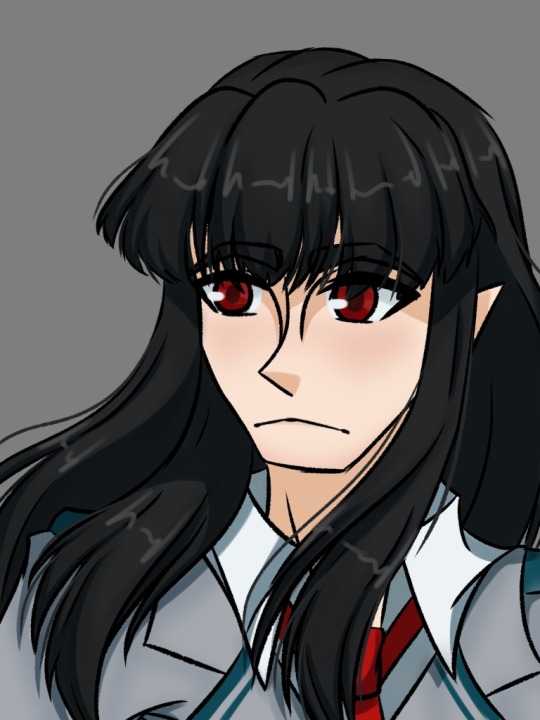
Vice class-representative
Quirk: Volume, she's able to change the volume of any sound (from really blasting something to full-on muting it)
serious + uptight attitude, but also a natural born leader who looks out for others
Kudasai Rena:

Class representative
Quirk: Memory Edition, Three parts basically: she members everything, can look into the memories of others, and change other people's memories.
A natural-born leader, seems put together and organized, but is secretly stressed.
Tanya Alfred:
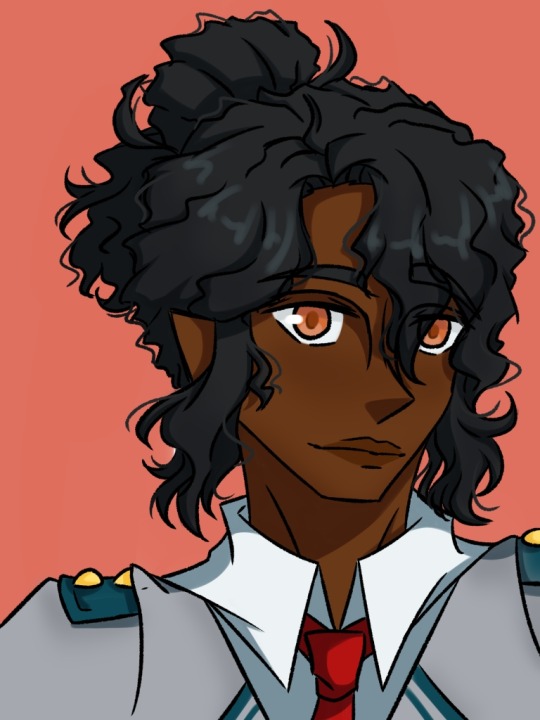
one of the few foreign exchange students of the 1st year class
Quirk: Limb Generation, she can generate additional limbs (arms, legs, fingers) on her body
confident, strong-willed, and hardworking. One she sets her mind on something, she will acheive it
Murasaki Hideki:

1/3 of the mian trio
Quirk: Geometry, can make any three-dimensional shape from thin air, but at a cost of his energy
cold and sharp-tongued, but has a softer side that only few see
Kikuyu Seishi:

Quirk: Jackson's Chameleon (often shortened to just "Chameleon"), a mutant quirk that makes him resemble a chameleon and makes him capable od doing what ever a chameleon can.
a quiet person, ot because he hates them but more like he lacks social skills. A socially awkward person who just trying his best.
Miyama Yashiro:

Quirk: Stone Statue: can turn any inanimate object (+ eventually living things) into stone with all five fingers. All effects can be reversed.
A prideful person with an outward personality, a kinda a handful. Bros just a big goof tho
Kinzoku Ryosei:

Quirk: Can generate (via iron content in blood) + manipulate metals at a certain range. Honestly, the fact he failed the entrance exam baffles like most of the class.
He’s a little goofy guy, often rambling about absolute nonsense but also a sweetheart
Kangae Noriko:

⅔ of the main trio
Main character moment
Quirk: Mind reader, literally the most self-explanatory one, she can read the mind of other people.
Impulsive and a bit of an airhead, but determined to meet her goals
Tsuzuko Kamon:

Quirk: plush dool, makes him resemble that of a stuffed animal. Essentially makes him like a human shield (Cant feel pain, absorbs shocks, ect)
Sweet guy who radiates innocence, but is kinda oblivious tho
Fujimoto Ikumi:

3/3 of the mian trio
Quirk: Yarn, her hair is yarn that can be manipulated and extended to great lengths.
Quiet and sweet when you first meet her, but can become just as lively as Noriko and Hideki with the right conditions.
Chijō Daishin:

Quirk: Rock, can manipulate and generate rocks via minerals form the food he eats
Energetic and confident, but alos very, very loud
Hedoro Emika:

Quirk: Slime Body, she can turn into a little blob of slime, can increase/decrease in size, trap things in her body, and fit through tight spaces
A cheerful person who likes being with other people can easily talk to anyone without any problems
Ikenoue Hakaru:
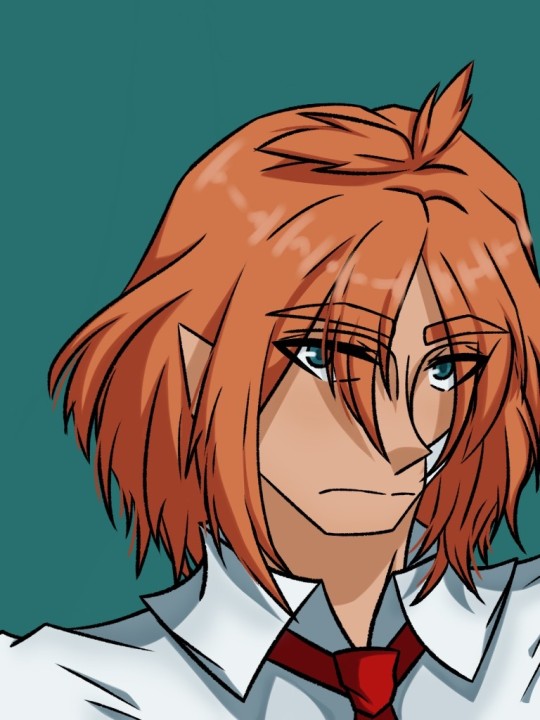
Quirk: Melt Off, by touching an inanimate object (or even people) with all five fingers, he can turn anything into a more liquified state.
Straightforward, apathetic, overly sarcastic, and very, very honest. One of the least social people in the class.
Kagayaku Amiyuki:

Quirk: Spherical Light, which can take sun rays and convert them into light orbs. Can be used to attack or just light up a room, can be stored
Very anti-social, not like “ew people”, more like “AAAAAA PEOPLE”, quiet and often tries to avoid her classmates
Hinazuki Satoru:

Quirk: Switch Blade, his hands can turn into switchblades with one swift motion with his hands (Edward Scissorhands, more like Edward Knifehands)
A laidback guy who can get along with practically anyone
Anabuki Masada:

“Quirk”: Bro isn't human, they can fire beams of light, extend their limb lengths, and have leg jets, They’re also fireproof and waterproof, with his only real weakness being electrocution
A being curious about the world around him, but is working on expressing emotion
Daiba Tokuro:

Quirk: Bomb, can make explosives via the proteins in his cells, honestly one of the most powerful students in the class
Just seems like a pretty normal dude, but with the right conditions, he can turn into a chaotic, super acceptive, and hyperactive,
Yamazaki Takage:

Quirk: Hallucination, can make others start to hallucinate by making eye contact with them
Despite his cheerful exterior, they are often described as weird and peculiar
Hanasaka Kao:

Quirk: Plant Growth, can grow plants from her body via planting seeds into her body (it's a fun process)
The older sister figure in the class, she often looks out for them and just wishes to protect them
Sakamata Kazuya:

Quirk: Orca, can do whatever a orca can (in/out of water)
A very quiet person who often mind his own business, but tends to notice the smallest things
#oc#ocs#bnha#mha#mha oc#bnha oc#mha ocs#bnha ocs#im still more attached to them than the actual series#theyre so silly#i hate the fact that im older than all of them now
14 notes
·
View notes
Text
25 questions
Tagged by @malapertmarquess
1. Why did you choose your url?
I found a D&D blog I liked called Breakfast with Bugbears, and saw that they directly inspired a blog called Lunching with Lamias. So I decided that was a cool trend (of 2) to jump on, and I carried that over to my Tumblr.
2. Any sideblogs? If you have them, name them and why you have them.
When I started transitioning, I started a “trans stuff” sideblog, and when I started converting to Judaism, I started a “Jewish stuff” sideblog. Mostly to contain the screeds of specific stuff I was reblogging on those subjects from my main.
I also have a Movie Quotes in Iambic Pentameter blog, which is exactly what it sounds like, but only has like 1 post. @iambicmoviequotes
3. How long have you been on Tumblr?
Since mid-2012. My then-crush, now-wife was on it, and I looked over her shoulder & bugged her to explain.
4. Do you have a queue tag?
No?
5. Why did you start your blog in the first place?
See #3
6. Why did you choose your avatar?
I picked it somewhat at random from my downloaded D&D-themed pictures, and have decided to stick with it forever (background notwithstanding lol).
7. Why did you choose your header?
It’s rainbow dice. What’s not to like?
8. What’s your post with the most notes?
https://dragonatthedinnertable.tumblr.com/post/185651522926/i-always-thought-that-i-couldnt-sort-my-life-out
9. How many mutuals do you have?
How do I even check that?
10. How many followers do you have?
994?! Why do nearly a thousand people follow my blog???
11. How many blogs do you follow?
259.
12. Have you ever made a shitpost?
Not that I can remember.
13. How often do you use Tumblr each day?
A couple hours every evening, scrolling all the day through my dash.
14. Did you have a fight/argument with another blog once?
No, I’m too conflict-averse lol.
15. How do you feel about ‘you need to reblog this’ posts?
Hate ‘em
16. Do you like tag games?
Yes, though I don’t like tagging people.
17. Do you like ask games?
I did back in the early teens, when people would actually send you asks.
18. Which of your mutuals do you think is Tumblr famous?
None of them?
19. Do you have a crush on a mutual?
Two or three of them. But only one of them is married to me :)
20. What is the last song you listened to?
Rolling Over, by Skinny Lister (on repeat, as I struggle through a shitty assignment)
21. What are you currently watching?
We are between shows atm
22. Sweet/savory/spicy?
YES! / Yeah / Sure
23. What is your current relationship status?
Married to the delightful @malapertmarquess
24. What is your current obsession?
Board game components. I’ve literally just been pulling my spare ones out of boxes & trays to fiddle with & count & stack.
25. What are nine albums/songs you’ve been listening to lately?
I basically don’t listen to albums. I’ve got my comfort playlists, and that’s mostly it.
That said, stuff that I’ve been looping (either actually or on my head):
“The Mariner’s Revenge Song” by The Decembrists, which is banging.
“Hot Shit”, by Tom Cardy
“Hardware Store”, by Weird Al Yankovic
“Gangnam Style”, by Psy (sadly not as good when divorced from the music video)
“Forever Tuesday Morning”, by the Mockers.
“Town Called Malice”, by The Jam. It disappoints me that none of their other songs hit like this.
“Sebona Fi”, by Yws Gwynnedd
4 notes
·
View notes
Text
Understanding Java Data Types: A Comprehensive Guide
Java, one of the most widely used programming languages, is known for its portability, security, and rich set of features. At the core of Java programming are data types, which define the nature of data that can be stored and manipulated within a program. Understanding data types is crucial for effective programming, as they determine how data is stored, how much memory it occupies, and the operations that can be performed on that data.
What are Data Types?
In programming, data types specify the type of data that a variable can hold. They provide a way to classify data into different categories based on their characteristics and operations. Java categorizes data types into two main groups:
1. Primitive Data Types
2. Reference Data Types
Why Use Data Types?
1. Memory Management: Different data types require different amounts of memory. By choosing the appropriate data type, you can optimize memory usage, which is particularly important in resource-constrained environments.
2. Type Safety: Using data types helps catch errors at compile time, reducing runtime errors. Java is a statically typed language, meaning that type checks are performed during compilation.
3. Code Clarity: Specifying data types makes the code more readable and understandable. It allows other developers (or your future self) to quickly grasp the intended use of variables.
4. Performance Optimization: Certain data types can enhance performance, especially when dealing with large datasets or intensive calculations. For example, using int instead of long can speed up operations when the range of int is sufficient.
5. Defining Operations: Different data types support different operations. For example, you cannot perform mathematical operations on a String data type without converting it to a numeric type.
When and Where to Use Data Types?
1. Choosing Primitive Data Types:
Use int when you need a whole number without a decimal, such as counting items.
Use double for fractional numbers where precision is essential, like financial calculations.
Use char when you need to store a single character, such as a letter or symbol.
Use boolean when you need to represent true/false conditions, like in conditional statements.
2. Choosing Reference Data Types:
Use String for any textual data, such as names, messages, or file paths.
Use Arrays when you need to store multiple values of the same type, such as a list of scores or names.
Use Custom Classes to represent complex data structures that include multiple properties and behaviors. For example, a Car class can encapsulate attributes like model, year, and methods for actions like starting or stopping the car.
1. Primitive Data Types
Primitive data types are the most basic data types built into the Java language. They serve as the building blocks for data manipulation in Java. There are eight primitive data types:
Examples of Primitive Data Types
1. Byte Example
byte age = 25; System.out.println(“Age: ” + age);
2. Short Example
short temperature = -5; System.out.println(“Temperature: ” + temperature);
3. Int Example
int population = 1000000; System.out.println(“Population: ” + population);
4. Long Example
long distanceToMoon = 384400000L; // in meters System.out.println(“Distance to Moon: ” + distanceToMoon);
5. Float Example
float pi = 3.14f; System.out.println(“Value of Pi: ” + pi);
6. Double Example
double gravitationalConstant = 9.81; // m/s^2 System.out.println(“Gravitational Constant: ” + gravitationalConstant);
7. Char Example
char initial = ‘J’; System.out.println(“Initial: ” + initial);
8. Boolean Example
boolean isJavaFun = true; System.out.println(“Is Java Fun? ” + isJavaFun);
2. Reference Data Types
Reference data types, unlike primitive data types, refer to objects and are created using classes. Reference data types are not defined by a fixed size; they can store complex data structures such as arrays, strings, and user-defined classes. The most common reference data types include:
Strings: A sequence of characters.
Arrays: A collection of similar data types.
Classes: User-defined data types.
Examples of Reference Data Types
1. String Example
String greeting = “Hello, World!”; System.out.println(greeting);
2. Array Example
int[] numbers = {1, 2, 3, 4, 5}; System.out.println(“First Number: ” + numbers[0]);
3. Class Example
class Car { String model; int year;
Car(String m, int y) { model = m; year = y; } }
public class Main { public static void main(String[] args) { Car car1 = new Car(“Toyota”, 2020); System.out.println(“Car Model: ” + car1.model + “, Year: ” + car1.year); } }
Type Conversion
In Java, type conversion refers to converting a variable from one data type to another. This can happen in two ways:
1. Widening Conversion: Automatically converting a smaller data type to a larger data type (e.g., int to long). This is done implicitly by the Java compiler.
int num = 100; long longNum = num; // Widening conversion
2. Narrowing Conversion: Manually converting a larger data type to a smaller data type (e.g., double to int). This requires explicit casting.
double decimalNum = 9.99; int intNum = (int) decimalNum; // Narrowing conversion
Conclusion
Understanding data types in Java is fundamental for effective programming. It not only helps in managing memory but also enables programmers to manipulate data efficiently. Java’s robust type system, consisting of both primitive and reference data types, provides flexibility and efficiency in application development. By carefully selecting data types, developers can optimize performance, ensure type safety, and maintain code clarity.
By mastering data types, you’ll greatly enhance your ability to write efficient, reliable, and maintainable Java programs, setting a strong foundation for your journey as a Java developer.
3 notes
·
View notes
Text
Grimoire Bandwagon + other Mage Organ-spells
Someone said this was a bandwagon so now I have to jump on it. Uh, spells, no associated wizard, standard glog rules - that’s basically it, enjoy. These haven’t been playtested at all and are almost certainly absurdly imbalanced.

Dust of Knuckles
R: touch, T: a human astragalus bone, D: permanent, until dispelled
Create a pile of white, grainy powder - a full inventory slot’s worth, if bagged. At any point, the caster can remotely manifest up to [dice] hands from the dust, and can control them in lieu of taking actions themselves. While being controlled, they have the strength and cohesion of the casters normal flesh, and the caster can remotely feel through them. The dust immediately loses all potency if dissolved, dispersed, exposed to holiness, or brought across a natural body of running water.
Ferric Craving
R: sight, T: creature, D: [sum] weeks
Target a living creature within your sight, who must save or suffer the effect. For the duration, all organic food is vile and indigestible to them - it provides them no nourishment, and imbibing it prompts immediate emesis. In return, they gain the ability to digest iron, which, is now both nourishing, palatable and aromatic to them. This has no effect on their ability to chew through metal, granting them no protection against the harm potentially caused by attempting to ingest metal prior to it reaching their stomachs, nor does it protect that organ against puncture and piercing from sharp pieces of metal. For obvious reasons, no effect on rust monsters nor on things which don’t need to eat. Instantly dispelled by enemas of fresh blood.
Dothric’s Summon Spawn
R: touch, T: blood dissolved in water (of a creature with at least one child), D: permanent
Reaching into the bloodied water, you pull out up to [dice] of their children, unless they successfully save vs being summoned by the spell. There is no guarantee whatsoever of any kind of loyalty or even non-hostility. Invented as a (failed) paternity test.
Blood to Nitroglycerin
R: touch, T: creature, D: permanent
Target saves or takes [sum]/2 (rounded down) damage as part of their blood is converted to nitroglycerin. The next time the target is exposed to intense heat, electricity, or blunt force physical trauma, they must save vs the nitroglycerin in their blood exploding, with 1d6 damage and 5’ of blast range for every 4 points of damage dealt by the initial spell, rounded down (so if they took 13 damage from Blood to Nitroglycerin the explosion does 3d6 damage to anyone within 15’), and almost surely causing instant death from massive internal damage to the target.
Frog to Prince
R: touch, T: a live frog, D: [sum] x 10 minutes
For the spells duration, target frog becomes Royalty, gaining, in addition to all the inherent metaphysical benefits of noble status, the ability to speak, ablative saves(not that it’s much help given they still have the same amount of HP), intelligence and charisma scores of 18, and a legitimate claim to dominion over a patch of swampland somewhere in the world. The frog is not loyal and serves only it’s own self interest. When the spell’s duration ends all these effects end and the frog is left with no memory of the experience, however it’s memories, Royal status, land claim, all that stuff, are transferred to the next frog this spell is cast on. All these things are stored in the spell, not in the frog.
Blood to Spiders
R: touch, T: creature, D: permanent
Target saves or has [sum] HP of their blood converted into a swarm of spiders. The spiders writhe in their veins, causing 1d6 damage per swarm HD (not HP) to the target. The next time the target takes piercing/slashing damage, or on death, the spider swarm erupt from their body, skittering away and biting everything (1 damage/turn, save vs paralysis).
Bugonia
R: 25’, T: meat, D: permanent
Up to [sum] rations worth of meat turns into bees. Resulting swarm has one HD for every 3 rations so converted, and is a swarm, so only takes 1 damage from most weapons (but full damage from fire and AOE stuff). It is highly aggressive and does not respond to commands. Stings do no damage, but make concentration imphjossible and impose disadvantage on all rolls for anyone caught within the swarm (from the pain), unless sufficiently covered/armored in which case they are totally immune.
Heartpull
R: 50’, T: [dice] creatures, D: concentration
Choose up to [dice] targets within 50’ of you. Their hearts (only their hearts, organ-less enemies immune) are inexorably pulled towards your outstretched palm/trunk/tentacle/pedipalp/etc, as if by a strong magnet. Every turn, they must either move at least [sum] ft closer towards you, or take [sum] damage as their heart slams against the walls of their chest (reroll sum every turn, only first roll counts for purposes of determining spell return, mishaps, dooms, etc). If they die while the spell is ongoing, the heart rips itself out of their corpse and flies into your grasp, thereby legally, philosophically, morally, and ideologically obligating you to say a shitty one-liner. Spell lasts for concentration, or until all targets are dead.
Blindspot
R: 50’ T: area, D: concentration
Choose a point within 50’ of you. For as long as you hold concentration, a spherical area with a diameter of [sum] feet emanating from that point becomes imperceivable by sight - not invisible, simply imperceptible. You don’t see through it, your eyes simply take the areas around (and through, if it’s transparent or not fully-coverage) it, sort of stitching them together so that they connect with each other without the blindspot in between. This applies even while within the blindspot, making it impossible to see your immediate surroundings as your mind instead gives you images of stuff further away as if it’s right in front of you. There’s some subconscious mental correction that lets you hit what you’re aiming for and move in the right direction while outside of the blindspot, but it doesn’t work within it.
Summon Demon Bull
R: 10’, T: any area connected to the ground, D: variable
Choose an area connected to the ground. In (5 - [dice]) rounds, a horrible immortal demon-bull will burst out of the ground somewhere in the vicinity of that area. Despite the name it’s not just any demon-bull, it’s a specific individual, the same each time - his name is El Giganto, he’s as large as a hippo, covered in broken spears, and attacks anything that attacks him, is making or has made loud noises, or is colored red. 2d8 damage gore attack, HD 6, half damage from normal weapons, burned by holy water and salt. 1d6 regen per turn, including from death. If it goes 2 turns in a row without a clear target it burrows back into the earth. Essentially immortal due to the regeneration, but if you somehow permakill it anyways the spell stops working.

Bonus- Mage hands (and feet, etc)
Mage hand
R: 25’ + [sum]’, T: object, D: concentration
Summon [dice] disembodied, floating hands of telekinetic force. You can control them as you would an ordinary hand, but your existing ones hang limp and useless as long as you do. They can extend up to (25 + [sum])’ away from you, and manipulate objects, but lacking arms cannot exert much force - not enough to swing a greatsword (unless using several at once), definitely strong enough to swing around a syringe.
Mage foot
R: 25’ + [sum]’, T: object, D: concentration
Summon [dice] disembodied, floating feet of telekinetic force. They essentially act as stilts with the middle part taken out, appearing beneath your own feet but connected to them by some sort of force - the gap between can be expanded and shrunk at will, up to (25 + [sum]) n length (or more accurately height).
Mage tongue
R: 25’ + [sum]’, T: object, D: concentration
Summon [dice] disembodied, floating tongues of telekinetic force. They’re too weak to lift anything and they don’t secrete saliva, but they can transmit taste to the caster, with the caster’s own tongue ceasing to function for the duration. As always, they’re capable of extending up to 25 + [sum} feet away from the caster.
Mage eye
R: 25’ + [sum]’, T: object, D: concentration
Summon [dice] disembodied, floating eyes of telekinetic force. The caster can see out of them, though they must temporarily relinquish use of their own eyes to do them. Able to extend up to 25 + [sum] feet away. Potentially useful for looking around corners?
Mage nose
R: 25’ + [sum]’, T: object, D: concentration
Summon [dice] disembodied, floating noses of telekinetic force. Capable of transmitting scents back to the caster, at the cost of losing the ability to smell through their own nose for the duration, and can extend up to 25 + [sum] feet away. Occasionally useful when you want to smell something but don’t want to take off your gas mask.
Mage ears
R: 25’ + [sum]’, T: object, D: concentration
Summon [dice] disembodied, floating ears of telekinetic force. Capable of transmitting sound back to the caster, at the temporary cost of the caster’s biological hearing. As always, can be extended up to 25 + [sum] feet away.
Mage genital
I’m not writing this one

Discussion - Frog-to-Prince is probably my personal favorite, just like the idea of the spell itself being a container for a given identity which only exists when the spell is active. Might use a variant version for the Snow White hexcrawl thing I’ve been told to write, like as the frog prince - the princes personality, title, and nobility contained within a spell the players can find? Similar basic idea with the demon-bull spell.
potential classes I thought of while making this - bugonia mage (a bunch of different ways of turning meat into insects - actual bugonia spell i wrote here probably isn’t part of it, it’d be a cantrip but take longer), edgelord (gish, full caster progression somewhat balanced by MD not recovering like normal - only way to get them back is by acts of extreme edge - must be some level of dangerous/illega/wasteful to qualify (setting fire to a hospital, setting fire to important art pieces, beating up toddlers in public). Heartpull is on their spell list). Chainsaw specialist (twist on chainsaw wizard but leaning more towards the wizard side than the chainsaw side, like an inverse chainsaw killer. big on delta template abilities)
5 notes
·
View notes
Text
Bitcoin and Financial Freedom: How Cryptocurrency is Changing the Game

In today's world, financial freedom is a concept that many strive for but few truly achieve. Traditional financial systems, with their inherent flaws and centralization, often create barriers that prevent people from accessing and controlling their own wealth. Enter Bitcoin, a revolutionary cryptocurrency that promises to change the game and provide unprecedented financial freedom.
The Problem with Traditional Financial Systems
Traditional financial systems are often plagued by issues such as inflation, corruption, and centralization. Central banks and financial institutions hold significant power over the economy, influencing interest rates, money supply, and access to financial services. In many regions, especially those with unstable economies, this centralization leads to financial exclusion and instability.
Inflation erodes the value of money over time, making it difficult for individuals to preserve their wealth. Moreover, in many developing countries, citizens face additional challenges such as lack of access to banking services, high remittance fees, and currency devaluation. These issues create an environment where financial freedom is a distant dream for many.
Bitcoin: A New Hope for Financial Freedom
Bitcoin, created in 2009 by the pseudonymous Satoshi Nakamoto, offers a decentralized alternative to traditional financial systems. As a peer-to-peer digital currency, Bitcoin operates on a decentralized network of computers, known as nodes, that validate and record transactions on a public ledger called the blockchain. This decentralized nature ensures that no single entity controls Bitcoin, making it resistant to censorship and manipulation.
Here are some ways Bitcoin is paving the way for financial freedom:
1. Decentralization and Control
Bitcoin's decentralized nature allows individuals to have complete control over their own money. Unlike traditional bank accounts, which can be frozen or restricted, Bitcoin wallets are owned and managed solely by the user. This means that individuals can send, receive, and store their Bitcoin without relying on intermediaries.
2. Protection Against Inflation
Bitcoin has a fixed supply of 21 million coins, making it inherently deflationary. Unlike fiat currencies, which can be printed at will by central banks, Bitcoin's supply is capped, ensuring that its value is preserved over time. This makes Bitcoin an attractive option for individuals looking to protect their wealth from inflation.
3. Financial Inclusion
In many parts of the world, people lack access to basic banking services. Bitcoin provides an alternative by allowing anyone with an internet connection to participate in the global economy. This is particularly beneficial for individuals in developing countries, where traditional banking infrastructure is often lacking.
4. Low Transaction Fees
Traditional financial systems often impose high fees for international transactions and remittances. Bitcoin transactions, on the other hand, can be conducted with minimal fees, making it a cost-effective solution for sending money across borders. This is especially important for migrant workers who need to send money back to their families.
5. Transparency and Security
Bitcoin transactions are recorded on a public ledger, ensuring transparency and reducing the risk of fraud. The blockchain's cryptographic security measures make it nearly impossible for transactions to be altered or tampered with, providing a high level of security for users.
Real-World Examples of Bitcoin's Impact
Several real-world examples illustrate how Bitcoin is providing financial freedom:
Venezuela: In a country plagued by hyperinflation and economic instability, Bitcoin has become a lifeline for many citizens. By converting their devalued bolivars into Bitcoin, Venezuelans can protect their wealth and gain access to a more stable currency.
Nigeria: With a large unbanked population and high remittance fees, Nigerians are increasingly turning to Bitcoin as a means of financial inclusion. Bitcoin allows them to send and receive money without relying on traditional banking systems.
El Salvador: In 2021, El Salvador became the first country to adopt Bitcoin as legal tender. This move aims to increase financial inclusion and reduce remittance costs for the country's large expatriate community.
The Future of Bitcoin and Daily Transactions
While Bitcoin has proven itself as a powerful tool for financial freedom and a reliable store of value, its role in daily transactions remains a topic of debate. The high transaction fees and slower processing times associated with Bitcoin make it less practical for everyday use compared to other cryptocurrencies designed specifically for quick and low-cost transactions.
As the cryptocurrency ecosystem evolves, it's likely that another cryptocurrency will emerge as the preferred medium for daily transactions. Cryptocurrencies like Litecoin, Bitcoin Cash, and others are already vying for this role, offering faster transaction times and lower fees. Meanwhile, Bitcoin is expected to solidify its position as a digital store of value, akin to digital gold.
Conclusion
Bitcoin is more than just a digital currency; it's a tool for financial empowerment. By providing decentralization, protection against inflation, financial inclusion, low transaction fees, and enhanced security, Bitcoin is paving the way for a new era of financial freedom. As more people around the world adopt this revolutionary technology, the dream of true financial independence becomes increasingly attainable. And while Bitcoin may primarily serve as a store of value, the broader cryptocurrency ecosystem will continue to innovate, bringing us closer to a future where financial freedom is accessible to all.
#Bitcoin#Cryptocurrency#FinancialFreedom#Decentralization#Blockchain#DigitalCurrency#FinancialInclusion#CryptocurrencyNews#CryptoCommunity#BitcoinAdoption#FutureOfMoney#FinancialIndependence#InflationProtection#CryptoRevolution#BitcoinVsFiat#EconomicStability#BitcoinEducation#CryptoEconomy#DigitalAssets#BitcoinExplained#financial education#financial empowerment#financial experts#finance#unplugged financial#globaleconomy
4 notes
·
View notes
Text
Okay, so!
I was watching this Royal Institution lecture about black holes and quantum computing (🤯), and Professor Marika Taylor put up this slide:
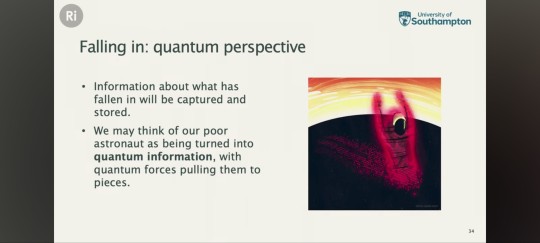
And I was immediately like:
"Oh snap! The Pokéball is a quantum computer system which functions by manipulating a miniature black hole to convert all of a target creature's matter and energy into the form of pure information!"
Conclusions:
🔮creatures inside Pokéballs are effectively in stasis, in a stasis bubble. They don't experience time, can't perceive the outside world - can't perceive full-stop, for that matter; their consciousness no longer even exists except as a snapshot of pure information.
🔮 you can store literally anything inside a Pokéball. Human beings, a pallet of dry goods, your bicycle, your car, etc, etc. Whatever you want within reason; anything that the Pokéball's AI would recognise and categorise as "a discreet thing", as long as its physical size isn't infinitesimally small, it isn't so big that it violates the safety margins built in by the system's engineers (and so probably not human beings then, after all), it isn't too amorphous to be quantised as a discreet being (i.e. Gastly in the wild are gaseous beings, and so expand to fill the room they're haunting; but Gastly in a Pokéball is just the capture of a sphere of space of some arbitrary diameter centred on Gastly's centre of mass, and so some of it will usually be left behind), and doesn't contain another Pokéball;
🔮 basically every Pokéball is a single-use Bag Of Holding. And just like those, if you put one singularity inside of another they explode so just don't do that. The PokéGovernment will send a PokéSWAT team to your Pokéhouse if they catch you even thinking about attempting to Pokéhack hack that particular safety lockout mechanism. 😡
🔮 The 'three shakes' before a pokémon is 'captured' aren't the pokémon exerting its willpower to break free of the mechanism like an angry cow kicking down a rickety corral. They're the Pokéball system running its checksums before it can declare a capture as valid and the Pokéball safe to handle:
[steps zero - if these fail the system doesn't even begin the capture process: are you attempting to capture a human being, or another Pokéball (this includes any part of any creature that is currently going into, or coming out of, another Pokéball), or the energy discharge of a pokémon attack in progress?]
1: was the targeting system accurate? Did it successfully capture one creature and nothing but all of one creature? Eg: minimal foreign debris, didn't leave a severed limb behind (or take some other pokémon's severed limb into the Pokéball too), didn't capture two or more pokémon at once (unless it's one of those 'cluster pokémon' where multiple individuals are supposed to be captured together as the individual parts of a greater whole), etc
2: while recording perfect information about the creature's brain, and analysing its brainwaves to thereby read its mind and what it was thinking at the time of capture: was it broken to the pokémon trainer's will? (Using 'broken' here in the sense of "breaking in" an untrained horse or elephant, to get them used to wearing human equipment and following human commands to do human work) i.e. reading the pokémon's mind to predict what will happen when it is released from the Pokéball: will it fight for the trainer or will it immediately turn around to continue attacking the trainer right where it left off?
[it's pretty explicit in the games' text that this is how it works. [Warning: TV Tropes] See: Strength Equals Worthiness, Defeat Means Friendship, and Gang Initiation Fight]
(and so this means that the breaking-in of a pokémon by capturing it happens before being captured in the Pokéball! Not because of being captured in the Pokéball!)
3: final checksum is degree of certainty that the information was recorded without error, and that when the information is released it will perfectly recreate the creature as if being released from a stasis bubble.
🔮 if a Pokéball breaks and its miniature black hole "evaporates in an uncontrolled fashion", whatever was recorded inside of that Pokéball has now been lost forever.
🔮 So what this looks like in practice is that Pokéballs are some of the most robust little gadgets ever devised by mankind but when they do fail they really pop off. Not unlike a LiPo battery bursting into flames. So any broken Pokéballs you come across are either uncompleted & inert factory blanks, DOA duds, or are used balls that failed some safety check or another and self-destructed.
🔮 [and this is one of the reasons why capturing a human in a Pokéball is illegal in all jurisdictions, and that taboo is built into the very device itself]

#pokemon#pokémon#pokeblogging#pokeblr#pokeball#Pokéball#pokemon theory#black holes#blogging#this was sitting in my drafts for absolutely ages and i can no longer remember what else I wanted to add so here it is
6 notes
·
View notes
Text
A quick Rusty's Retirement getting started thing
I've been playing since the demo came out, and while there are some slight changes from the early game of that, they aren't too much of one.
This might get a bit long, so cutting.

(Rusty, the game's farmer, standing in the middle of the default setup; his biofuel converter is on the top left, the default crop patch on the bottom left, and to the right of him are his default storage shed and well.)
You do not control Rusty, your farmer. You do, however, plant seeds, add decorations, and place various structures as you want. (You can change his priorities, but that's beyond this post.)
The two sections with numbers (8 and 400 respectively) tell you how much biofuel and how many bits you have. Bits is your main currency, biofuel can be converted into bits but is also used to power your bots and is needed to construct certain structures. Bits are generated by harvesting crops, while biofuel is generated by placing 3 different crops on the biofuel converter and having it run. (There are other ways of generating biofuel in the game once you unlock certain NPC houses, but the focus here is early game.)

You start with 3 crops - wheat, radish, and cabbage. As you plant crops, the game keeps track of how many of each crop has been harvested. Once you've reached a threshold of a certain number of two or more crops, you'll unlock another crop. For example, the leek shown above is unlocked by harvesting 4 wheat and 4 radish. As you get more crops, you'll unlock more money-making ones, both in terms of bits and biofuel generated.
Here's how to read the info screen:
Name of crop: Leek
How long it takes for the crop to mature, assuming it's watered (and you're not in focus mode, which makes growing take 2x as long): 3 (real-time) minutes per crop
How many times it needs to be watered: 3 times per crop (this is the water icon)
How many harvestables you get for this crop: 4 (the two arrows icon)
How much biofuel you get from this crop: 2 per harvest
How many bits you get per harvest: 4
You can also see on the right that I have 8 leek stored and it costs 2 to plant.
You can build bots to help harvest/water/haul stuff off to be made into biofuel. These take up a 2x1 or 1x2 space and cost 1 biofuel every time they recharge. Alternatively, you can build Haiku's house; I think it takes up either 2x4 or 2x6 spaces but Haiku will do everything that Rusty does without any biofuel cost.
You can also add more plots if you want to go beyond the basic 4x4; all you need is space. Be aware that everything costs more beyond the first plot/building of its type.
In any case, take your time. Rusty is in no hurry and you shouldn't be either. Plant what you want, unlock stuff at your own pace, have fun!
2 notes
·
View notes
Text
The Ultimate Keto Meal Plan for Weight Loss and Well-being!
Source youtube: Must Watch:click here
Introduction
In a world where fad diets come and go, the ketogenic diet, or keto diet, has emerged as a sustainable and effective way to lose weight and achieve overall well-being. The keto diet focuses on consuming low-carb, high-fat foods, leading the body into a state of ketosis, where it burns fat for energy instead of carbohydrates. In this comprehensive guide, we will explore the ultimate keto meal plan to help you shed pounds, boost your health, and experience the vitality you've always desired.
Click here to find more : Official website
Understanding the Keto Diet
Before diving into the ultimate keto meal plan, it's essential to understand the basics of the ketogenic diet. The primary idea behind the keto diet is to shift your metabolism from using glucose as the primary energy source to utilizing fat. This process leads to weight loss and various health benefits. Here's how it works:
Carbohydrate Restriction: The keto diet is low in carbohydrates, typically containing no more than 20-50 grams of net carbs per day. This restriction forces the body to find an alternative source of energy.
Ketosis: With minimal carbohydrates available, the body enters a metabolic state called ketosis. During ketosis, the liver converts fat into ketones, which become the primary source of energy.
High Fat Intake: To maintain ketosis, you must consume a substantial amount of healthy fats, typically making up around 70-75% of your daily caloric intake.
Moderate Protein: While protein is an essential part of the diet, you should not overconsume it, as excessive protein can potentially hinder ketosis.
Nutrient-Dense Foods: Choose nutrient-dense foods rich in vitamins and minerals to maintain your overall health and well-being.

Click here to find more : Official website
The Benefits of the Keto Diet
Now, let's delve into the numerous benefits that the keto diet can offer for both weight loss and overall health:
Weight Loss: The keto diet's ability to promote fat burning leads to significant and sustainable weight loss. It also helps reduce appetite and cravings, making it easier to maintain a caloric deficit.
Improved Blood Sugar Control: The keto diet can help stabilize blood sugar levels and decrease insulin resistance, making it an excellent choice for individuals with type 2 diabetes or those at risk.
Enhanced Mental Clarity: Many people report improved mental clarity and focus on the keto diet. This is because ketones are an efficient and clean source of energy for the brain.
Increased Energy Levels: By tapping into your body's fat stores, the keto diet can provide a steady source of energy, reducing energy crashes and fatigue.
Better Cardiovascular Health: Some studies suggest that the keto diet can improve heart health by lowering levels of triglycerides, increasing HDL (good) cholesterol, and reducing blood pressure.
Anti-Inflammatory Effects: The keto diet may reduce inflammation in the body, which is associated with various chronic diseases.
Click here to find more : Official website
The Ultimate Keto Meal Plan
Now, let's outline a sample keto meal plan that will help you achieve your weight loss and well-being goals.
Day 1:
Breakfast: Scrambled eggs with spinach and feta cheese cooked in butter.
Lunch: Grilled chicken breast with a side of asparagus and a small avocado.
Dinner: Baked salmon with a lemon-butter sauce, served with broccoli and cauliflower.
Day 2:
Breakfast: Full-fat Greek yogurt with a handful of berries and crushed walnuts.
Lunch: Spinach and arugula salad with grilled shrimp, cherry tomatoes, and olive oil dressing.
Dinner: Beef stir-fry with vegetables and a high-quality soy sauce substitute like coconut aminos.
Day 3:
Breakfast: Keto-friendly smoothie made with almond milk, unsweetened cocoa powder, avocado, and a scoop of low-carb protein powder.
Lunch: Zucchini noodles with pesto and grilled chicken.
Dinner: Baked cod with a side of sautéed kale and garlic in olive oil.
Day 4:
Breakfast: Omelet with diced bell peppers, onions, and bacon.
Lunch: Tuna salad made with mayonnaise and served in lettuce wraps.
Dinner: Grilled pork chops with a side of roasted Brussels sprouts.
Day 5:
Breakfast: Keto pancakes made with almond flour, topped with sugar-free syrup.
Lunch: Sliced roast beef wrapped in lettuce leaves with mayo and mustard.
Dinner: Baked chicken thighs with a side of roasted butternut squash.
Day 6:
Breakfast: Cottage cheese with chopped pecans and a drizzle of honey (in moderation).
Lunch: Broccoli and cheddar soup with a side salad.
Dinner: Grilled shrimp skewers with a side of grilled zucchini and a garlic-herb butter sauce.
Day 7:
Breakfast: Keto smoothie with coconut milk, spinach, and a scoop of almond butter.
Lunch: Sliced turkey and avocado lettuce wraps with a side of pickles.
Dinner: Steak with a side of asparagus and a garlic-herb compound butter.
Snacks and Sides:
Mixed nuts (in moderation)
Cheese and olives
Celery with peanut butter
Sliced cucumber with guacamole
Remember, hydration is crucial on the keto diet, so drink plenty of water throughout the day.
Click here to find more : Official website
Conclusion
The ultimate keto meal plan is not just about losing weight; it's a lifestyle change that can lead to improved health and overall well-being. With the keto diet, you can harness the power of ketosis to transform your body and mind. However, it's essential to consult with a healthcare professional before starting any new diet, especially if you have underlying health conditions. If the keto diet aligns with your goals and needs, the above meal plan can serve as a valuable starting point on your journey to a healthier, happier you. So, take the first step towards a keto lifestyle, and embrace the transformative power of the ketogenic diet for lasting weight loss and well-being
Continue reading………………….
Click here for more information:
Click here to find more : Official website
#weightloss#loseweight#belly fat#bellyfat#losebellyfat#ketodiet#fatloss#fatburn#reduceweight#lower belly fat#losinweight#tropislim#Diet#dietary supplement#mealreplacement#replacement#shake#meal replacement shake#recipes#food#Wellbeing Nutrition Apple Cider Vinegar
1 note
·
View note
Text
A Complete Guide to Compress Audio File Without Losing Quality
In today’s digital world, audio files are everywhere—from music tracks and podcasts to voiceovers and videos. However, large audio files can take up significant storage space and slow down your workflow, especially when uploading or sharing them online. This is where Audio File Compression becomes essential. Whether you’re a content creator, podcaster, musician, or marketer, learning how to Compress Audio File efficiently can save you time, bandwidth, and storage.
What Is Audio File Compression?
Audio File Compression is the process of reducing the file size of an audio track without severely compromising its sound quality. Compression can be lossless, where the original audio data is perfectly preserved, or lossy, where some data is removed to achieve a smaller size. The goal of Compressing Audio Files is to make them easier to store, share, and use in projects while maintaining acceptable audio fidelity.
Why Compress Audio Files?
There are many reasons why people choose to Compress Audio File:
Save Storage Space: Large WAV or AIFF files can occupy hundreds of MBs. Compression reduces this significantly.
Faster Upload & Download Times: Compressed files load quicker, which is crucial for streaming or online sharing.
Efficient Editing and Processing: Smaller files are easier to manage in audio editing software like Eazystudio.
Better Compatibility: Some platforms have size limits or preferred formats, making compression necessary.
Tools to Compress Audio Files Easily
While there are numerous tools available online and offline, finding a reliable one that doesn’t compromise quality is key. Let’s look at a few:
1. Eazystudio
If you’re looking for a reliable, all-in-one platform, Eazystudio is a top contender. Known for its intuitive design and powerful features, Eazystudio allows users to easily Compress Audio File in various formats like MP3, WAV, AAC, and more. It also offers batch processing, so you can compress multiple files at once—saving time for professionals and hobbyists alike.
Key Features of Eazystudio:
Drag and drop interface
Format conversion options
Audio trimming and enhancement
Custom bitrate and sample rate settings
Works directly from your browser
2. Favicon Generator Online with Audio Features?
You might wonder what a Favicon Generator Online has to do with audio. Surprisingly, some online favicon generators have expanded their toolkit to include multimedia tools—like file format converters and even Compressing Audio Files. Though these features are more basic, they’re handy for quick tasks when you’re already using such tools for web design.
How to Compress Audio File in 3 Simple Steps
Regardless of the tool, the process of Compressing Audio Files generally follows a few simple steps:
Step 1: Upload Your Audio File
Start by uploading the file you want to compress. Platforms like Eazystudio support drag-and-drop for added convenience. Ensure you’re uploading the correct file type (MP3, WAV, FLAC, etc.).
Step 2: Choose Compression Settings
Next, configure your compression settings:
Bitrate: Lower bitrates = smaller files but reduced quality.
Sample Rate: Often 44.1 kHz for music, but can be reduced for voice.
Format: Choose lossy formats like MP3 for smaller sizes or lossless like FLAC for better quality.
Step 3: Download and Save
Once your file is compressed, simply download and save it. Most platforms also give you a side-by-side comparison of the original and compressed sizes.
Tips for High-Quality Audio File Compression
Avoid Over-Compression: Don’t set the bitrate too low—especially if you’re dealing with music or detailed audio. It can ruin the quality.
Use Proper Format: Use MP3 or AAC for general use. For archiving or editing, go for lossless formats.
Test Before Finalizing: Always listen to your compressed file before using or sharing it.
Batch Process Smartly: When handling many files, tools like Eazystudio offer batch compression features that maintain consistency.
Use Case Scenarios
Podcasters: Reduce file sizes for quicker uploads and seamless streaming.
Musicians: Share sample tracks without uploading large studio files.
Web Developers: Combine Audio File Compression with a Favicon Generator Online for building fast-loading websites.
Video Editors: Compressed audio files can be added into video timelines without bloating project sizes.
Final Thoughts
Compressing Audio Files is no longer a technical task reserved for audio engineers. With tools like Eazystudio and even unexpected options like a Favicon Generator Online, anyone can Compress Audio File effectively and with minimal effort. Whether you’re saving space on your device, optimizing audio for the web, or streamlining a professional production workflow, the benefits of Audio File Compression are undeniable.
In a world where digital efficiency is key, learning how to Compress Audio File is a valuable skill. Choose the right tools, follow best practices, and you’ll be creating, sharing, and storing your audio like a pro
0 notes
Text
Understanding Uninterruptible Power Supply (UPS): A Guide from Leading UPS Suppliers
An uninterruptible power supply (UPS) or power backup system is an electronic device that delivers continuous electricity to equipment like computers and telecom systems. It not only supplies backup power during outages but also shields connected devices from potential electrical damage.
The importance of a UPS system lies in the fact that a standard electrical supply can often be inconsistent. Power sources may unexpectedly fail, leading to network interruptions and potential data loss. Additionally, issues such as power surges, voltage drops, electrical noise, and harmonic distortion can compromise the quality of electricity. To safeguard equipment and maintain operational performance, a UPS offers a dependable layer of protection—something JGB Qatar specializes in by providing reliable UPS solutions tailored to critical needs.
How Does an Uninterruptible Power Supply Work?
Unlike traditional backup power systems or standby generators, a UPS delivers almost immediate protection against power disruptions by utilizing energy stored in its batteries.
A UPS system consists of four key components: the battery, inverter, rectifier, and static bypass switch. The battery serves as the core of the UPS, though it's also a common point of failure. The rectifier plays a dual role—transforming incoming utility power from alternating current (AC) to direct current (DC), and recharging the batteries while channeling DC power to the inverter. The inverter then converts this DC power—whether from the rectifier or the batteries—back into AC power for use by connected equipment. The static bypass switch enables the utility's AC power to pass directly to the load, bypassing the internal UPS components, and acts as a crucial backup path during a UPS malfunction.
What Are the Main Types of Uninterruptible Power Supply?
Typically, according to different working principles, UPS power supply covers standby (offline) UPS, line-interactive UPS, online (double-conversion) UPS.
1. Offline/Standby UPS
Provides basic backup during outages. Switches to battery when power fails.
Best for: Home PCs, small devices.
2. Line-Interactive UPS
Offers voltage regulation and backup power. Handles minor fluctuations without using battery.
Best for: Small businesses, servers.
3. Online/Double-Conversion UPS
Delivers constant, clean power with zero transfer time. Converts power continuously.
Best for: Data centers, hospitals, critical equipment.
What to Consider When Buying an Uninterruptible Power Supply?
In addition to the three commonly used UPS system types mentioned above, there are other important factors to consider when making a purchase.
Voltage Rating. UPS voltage rating is the maximum load designed to support, typically ranging from 300 VA to 5000 kVA. It’s suggested to buy UPS with a voltage rating that is 1.2 times the total load needed.
Performance Monitoring. UPS performance monitoring continually watches for warning signs like deteriorating performance or an overheating battery, and send real-time notifications when potential issues develop, through which serious breakdowns can be avoided.
Available Connections. UPS batteries for home use typically offer 5-8 outlets. Some are used for power supply backup, and some for device protection. Some UPSs can be used in data centers for Ethernet and coaxial connections.
Form factors. The two main form factors are tower/freestanding and rack-mounted type. Tower-type is smaller and primarily for simple home/office setups. Rack-mounted ones are larger and mainly used for more complex commercial operations.
Battery. Choosing user-replaceable batteries avoids replacing the whole UPS unit when the battery breaks down. Buying Lithium-ion batteries with a longer lifespan can also be a cost-effective solution.
Noise. Smaller UPSs usually require no fan for cooling, but larger ones often do. If perfect silence is needed in the environment, a fan-free UPS can be a better choice.
In conclusion, choosing the right UPS system is essential for ensuring uninterrupted power and protecting sensitive equipment from voltage irregularities and outages. Whether for home, business, or industrial use, understanding the different types of UPS systems helps in making informed decisions. JGB Qatar, one of the trusted UPS suppliers in Qatar, offers reliable power solutions tailored to various needs, ensuring performance, safety, and peace of mind.
0 notes